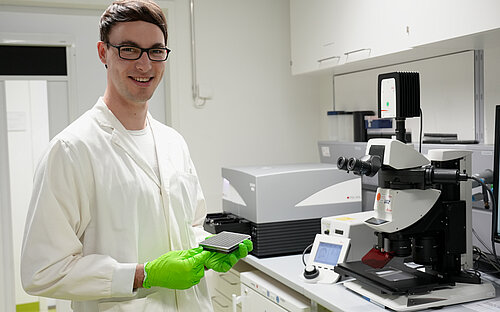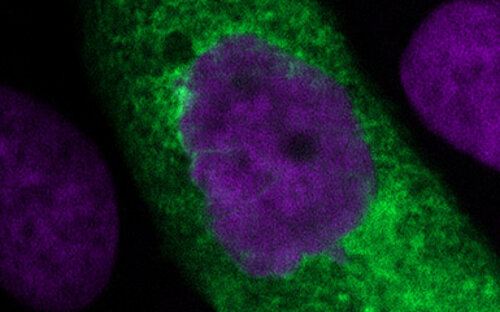Nature - our medicine cabinet

The meaning of the term, "natural product", varies depending on perspective: While laymen understand the term to simply mean substances originating from nature - extracted from plants, produced by bacteria occurring in nature, obtained from animal products…
It means much more to scientists. To scientists, natural products are organic chemical compounds with a biological function, an effect. The most potent drugs known are based on natural products. We have used them for thousands of years.
Pre-Christian documents evidence the use of foxglove (digitalis) in heart disease; the ancient Greeks used willow bark against pain and fever. And even nowadays, digitalis glycosides made from foxglove are used as medications, and aspirin, the most successful medication of all times, is based on salicylic acid from willow bark. But these are just two examples of a virtually inexhaustible pool of drugs originating from plants. We use them as antibiotics, cancer drugs, cholesterol-lowering medications, immunosuppressant drugs and products from nature have also had a crucial influence on the development of new pesticides.
These natural products, which are converted to drugs by chemists and pharmacists, are so-called secondary metabolites, i.e. substances produced by plants, micro-organisms or fungi for their own needs. Especially in plants, the unusual chemical structures often serve to attract insects or provide protection against herbivores - since a plant cannot turn and run and therefore needs to have an effective defence. Likewise, micro-organisms turn to chemistry to prevail over their competitors - and deliver tools against pathogens to us "free of charge". Thus far, scientists have isolated approx. 12,000 antibiotics from bacteria and fungi and more than 100 of these are in clinical use, after appropriate chemical adaptation to their task as a medication.
In the past, scientists searched for and found new natural products mainly in traditional medicinal plants and the rain forest was also long considered to be a reservoir for new agents. Meanwhile, researchers investigate different forms of life from all areas with modern high throughput methods and create large libraries of substances. More than half of all new agents are either natural products, derivatives of natural products or are assembled from parts of natural products.
Myxobacteria: In the focus of the HZI
The group of myxobacteria are a major focus of the scientists at the HZI. These micro-organisms live in the soil and produce products with unusual structures which are not found anywhere else in nature. This makes them a promising source of new mechanisms of action ("active principles").
Indeed, potent agents have already been obtained from myxobacteria. For example, the antibiotic, Sorangicin, the fungicide, Soraphen, used as a pesticide and Ixabepilone, a semi-synthetic derivative of epothilone for tumour therapy developed at the HZI in a collaboration with Bristol-Myers Squibb. The product was approved in 2007 for chemotherapy-resistant tumours , and further derivatives of this natural product are in the development phase at other companies.
From natural product to active product through teamwork
The successful development of a natural product into a potential medication necessitates a whole chain of steps. Promising bacterial strains need to be identified and grown in culture. The secondary metabolites indicate the metabolic profile of the strain and potential candidates for an active product need to be isolated from the multitude of molecules that are produced by a bacterium. Test systems for testing the effect need to be developed and the products need to be produced on a larger scale - if the results are promising.
If the bio-screening results are interesting, medical professionals are included in the team to check the potential and application opportunities of the product. At the same time, chemists specialising on natural products identify the structure of the active product and search for the mechanism that allows the molecule to elicit its biological effect. Once the structure and possible application field are clarified, the product needs to be optimised for application in humans. This is a long process that requires the scientists of the HZI to work hand in hand - for new medications against infectious diseases.
(jsg)
Involved research groups
-
Anti-infectives from Microbiota
 Prof Dr Christine Beemelmanns
Prof Dr Christine Beemelmanns -
Antimicrobials through Chemoenzymatic Synthesis
 Dr Alexander Kiefer
Dr Alexander Kiefer -
Antiviral and Antivirulence Drugs
 Prof Dr Martin Empting
Prof Dr Martin Empting -
Genome Mining for Secondary Metabolites
 Dr Chengzhang Fu
Dr Chengzhang Fu -
Human-Microbe Systems Bioinformatics
 Jun Prof Dr Alexey Gurevich
Jun Prof Dr Alexey Gurevich -
Clinical Bioinformatics
 Prof Dr Andreas Keller
Prof Dr Andreas Keller -
Actinobacteria Metabolic Engineering
 Dr Andriy Luzhetskyy
Dr Andriy Luzhetskyy -
Microbial Natural Products
 Prof Dr Rolf Müller
Prof Dr Rolf Müller -
Microbial Drugs
 Prof Dr Marc Stadler
Prof Dr Marc Stadler -
Natural Product Biotechnology
 Prof Dr Tobias Gulder
Prof Dr Tobias Gulder -
Synthetic biology of microbial natural products
 Dr Kenan Bozhüyük
Dr Kenan Bozhüyük -
Drug Design and Optimization
 Prof Dr Anna K. H. Hirsch
Prof Dr Anna K. H. Hirsch



















